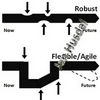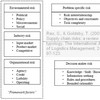 I really enjoyed reading Cost-Benefit Analysis: Theory and Application
I really enjoyed reading Cost-Benefit Analysis: Theory and Application by Tefvik Nas. I used this book to learn more about cost-benefit analysis (CBA) in tranportation planning, and albeit the book does not relate specifically to that field, it worked very well. The nice part is that it first discusses some macro-economical concepts before delving into cost-benefit calculations. This is very useful if you, like me, do not have a background, classes, courses or a degree in economics. As an introductory book this is excellent.
If you need to know more…
…then I suggest Cost-Benefit Analysis: Concepts and Practice. However, I found this book much easier to read and understand. This book has been designed specifically with the non-economist in mind, for example, students in public administration, urban studies and health care who may have little or no preparation in economics.
Reference
Nas, T. (1996). Cost-Benefit Analysis: Theory and Application. Thousand Oaks: Sage Publications
Author link
- linkedin.com: Tefvik Nas
Buy this book at amazon
- amazon.com: Cost-Benefit Analysis: Theory and Application
Related
- husdal.com: An essay on cost and benefit analysis












